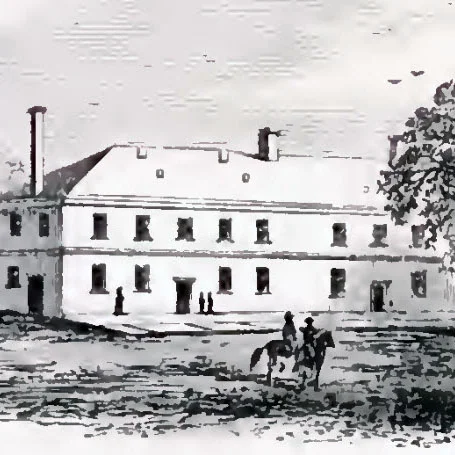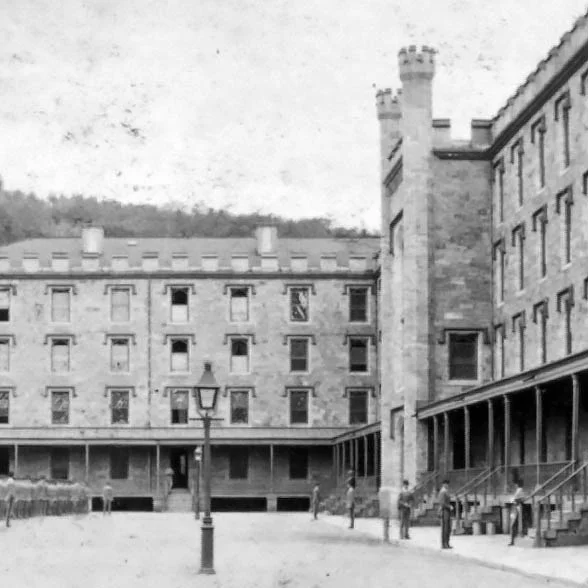Shooting at West Point, 1876
A West Point sentry in the early 1870s. It is not known if this is the site of the incident recounted here. Source: USMA Archives. Photo by Pittman.
On the night of September 8, 1876, Private John L. Rothelin, a German-born soldier stationed at West Point, was the sentry at the Post's southern gate. The location was likely the dark stretch of road a few hundred yards south of today's Mahan Hall. Rothelin heard a carriage approaching and yelled, "Who comes there?" The driver, who was returning to Buttermilk Falls (Highland Falls) from the Academy, called back, "A friend." Because of the darkness, Rothelin could not confirm the driver's identity, so he decided to let the driver approach into the light from the gas lamps at the guardhouse. It appears that the driver, William Porter, a.k.a. Washington Putnam, failed to stop, or possibly stopped and then started again. Rothelin again ordered the carriage driver to stop (the reason is uncertain) and when he did not, the soldier charged forward with his bayonet, which got stuck in the wheel. When he tried to remove it, the rifle, which was allegedly half-cocked, fired and hit Porter in the hip. The round was removed, but Porter died several days later from lockjaw.
A coroner's inquest was held about two weeks after the shooting. Rothelin recounted his version of the story. A Second Lieutenant, Henry L. Harris, USMA Class of 1869, testified that while the sentry's duty was to stop the halt the carriage, it was not expected that shots would be fired if a person refused to stop. Harris seems to have stated that he felt charges should be filed. The inquest jury concluded that Porter's death by lockjaw was Rothelin's fault, and issued a warrant for his arrest. Despite anger from the local community, military authorities refused to turn over the soldier until they had permission from Washington. Eventually, Rothelin was turned over.
From this point, the story is a bit unclear. In August of 1876, there is mention that the case was under investigation by a U.S. Grand Jury and that Rothelin was released on his own recognizance and returned to duty at West Point. Enlistment records indicate that he was court-martialed and discharged from duty at Willett's Point (later Fort Totten) on December 8, 1876. Sometimes a rifle does "go off half-cocked" with dire consequences.
Selected Sources:
"A West Point Guard's Fatal Mistake." Harrisburg Telegraph. July 25, 1876.
"An Over-Zealous Sentry." The Times (Philadelphia). July 27, 1876.
"Current Events." The Brooklyn Daily Eagle. August 11, 1876.
"Orange County Court." The Evening Gazette (Port Jervis, NY). September 30, 1876.
"Release of the West Point Sentry." Evening Star. August 11, 1876.
"The Shooting at West Point." The New York Times. July 26, 1876.




